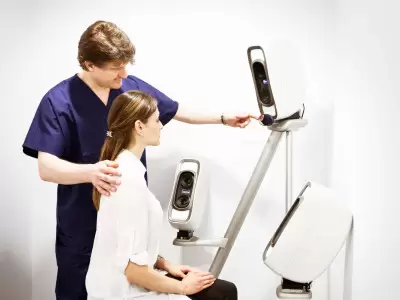Treatment of Cerebrospinal Fistula
What is CSF?
The fluid in the ventricles of the brain and spinal cord, as well as between the membranes surrounding these structures, is referred to as the "cerebrospinal fluid (CSF). CSF, a clear fluid that normally does not contain microorganisms, should stay in the meninges consisting of differenat layers and should not contact external environment. The strongest and protective layer of the membrane structure surrounding the brain and spinal cord is its outermost layer called the ‘dura’. The condition, where CSF gets out, leaks, and forms fistula as a result of a damage occurring in the dura due to various causes, which then flows toward the nose and surrounding sinus cavities, and is finally discharged from the nose as a clear fluid, is referred to as "Rhinorrhea".
The close adjacency between the cerebral ventricles, nasal cavities and sinus cavities as well as the fact that in certain regions of the bone wall between these anatomic structures are very thin and fragile increases the risk of a CSF leak in such regions. Transition of microorganisms in the nose and sinuses—which are non-sterile environments— from the damaged area into the meninges may cause very serious complications such as inflammation of the membranes that cover the brain (meningitis), inflammation of the brain tissues (encephalitis) or abscess formation in the brain.
What are the Causes of CSF Leaks?
Fractures in the bone structures adjacent to the meninx (Dura layer), due to a blow to the head or face.
Traumas occurring involuntarily during surgical interventions, endoscopic sinus surgery in particular, in the regions adjacent to the dura.
Mostly malignant tumors in the regions adjacent to the dura.
Defects formed voluntarily during surgical operations intended to remove tumors and masses adjacent to the dura.
Congenital weak points at the bone structures surrounding the dura as well as gaps and anatomical variations
are the leading causes of CSF leak.
However, some other CSF leaks called “spontaneous CSF leaks” that have no cause, can also develop.
How is a CSF Leak Diagnosed?
In all patients but especially those who have a story of head trauma or surgical intervention in the nose and sinus area, any unilateral discharge of a clear fluid from the nose, which increases when the patient leans forward or strains, must suggest the presence of a CSF leak.
In patients who have had a sinus surgery, reviewing the surgical site endoscopically is helpful in the diagnosis; however, the definitive diagnosis can be made with the laboratory analysis of the clear fluid discharged from the nose. After achieving the final diagnosis, the leakage region should be located for being able to make a treatment plan.
Various radiological evaluations, especially computed tomography and MRI evaluations, are made for this purpose. In cases where the leakage region cannot be located with standard imaging techniques, the location may need to be determined with intranasal endoscopic examination involving the delivery of special coloring agents into the CSF.
How is a CSF Leak Treated?
For stopping the CSF leak, the damage in the meninges should be repaired in such a way as to ensure water-tightness.
In the past, an aperture was made from the outside the cranium for such a repair; but today primarily intranasal interventions are preferred, in consequence of the developments in the technology intended for endoscopic sinus surgery.
With endoscopic procedures, CSF leaks in all the anatomical regions adjacent to the nose and sinus cavities, from the foremost frontal sinus to the rearmost sphenoid sinus, can be repaired with success rates of up to 95-97%.
During surgery, the damaged area is viewed from the nasal side with an endoscope inserted in the nose, and then small pieces of tissue such as fat, cartilage, bone lamella, and fascia taken from the patient’s own body, mostly from inside his/her nose, as well as special tissue adhesives (where necessary), are used to provide a repair in a way not to cause any serious additional damage in any region other than the surgical site.
The main advantages of the endoscopic procedure over the externally performed open-surgeries are the similar success rates that it proves while causing less tissue trauma formations, as well as its shorter recovery time, and more comfortable postoperative period.






Comment
Your Contact Information will not be shared in any way. * Required Fields